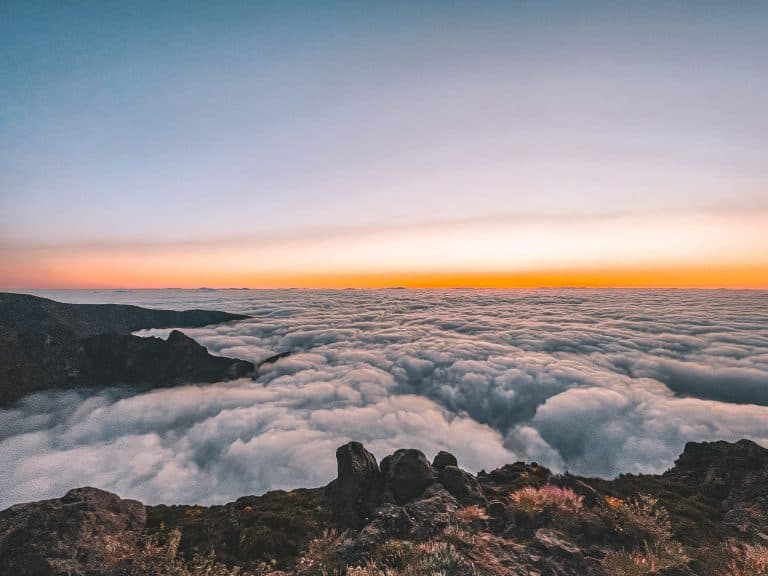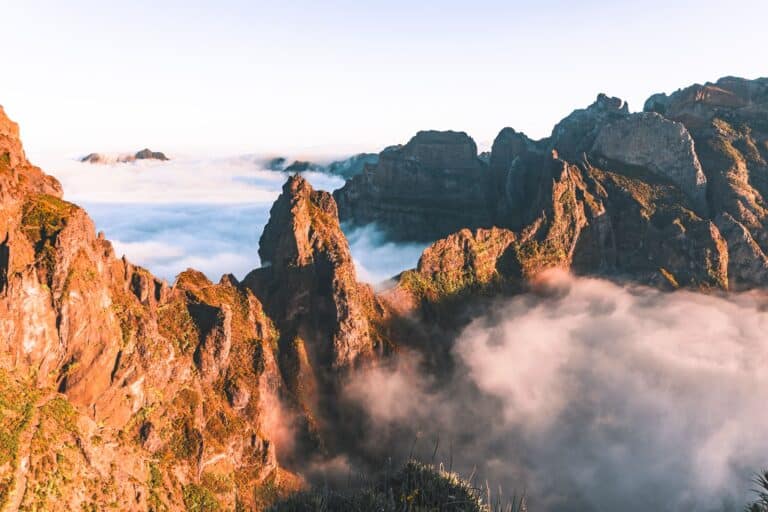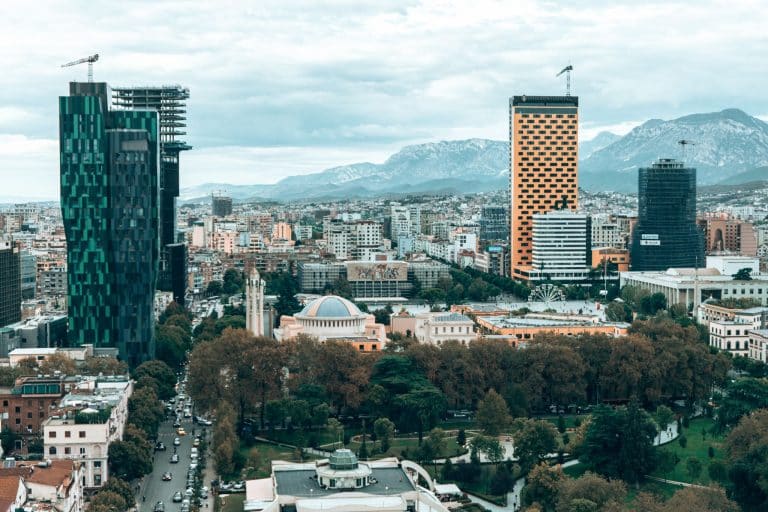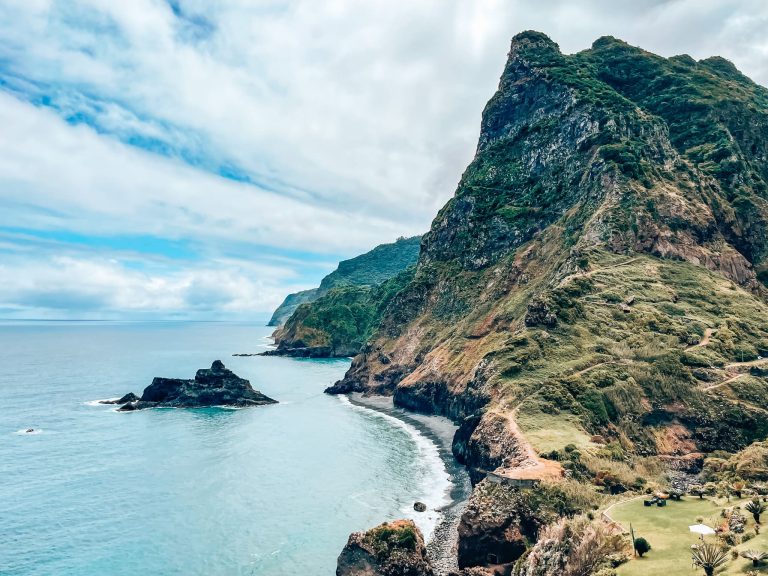
18 Amazing THings to do in Bulgaria
Pristine alpine lakes, dramatic mountain peaks, striking architecture, fascinating ruins, tranquil parks, quaint cobbled streets and so much more all fuse beautifully to create an incredible amount of things to do in Bulgaria. Read on for our complete guide!
Bulgaria is packed to the brim with mountains, lakes, waterfalls, intricate monasteries and an incredibly rich history and culture that’s evident everywhere. It’s a hidden treasure waiting to be explored and often overlooked by most travellers meaning fewer crowds and unspoiled scenery.
Bulgaria is unique. It’s a country full of incredible natural beauty, ancient ruins and elaborate architecture that anywhere else in the world would have queues of tourists outside waiting to take photos.
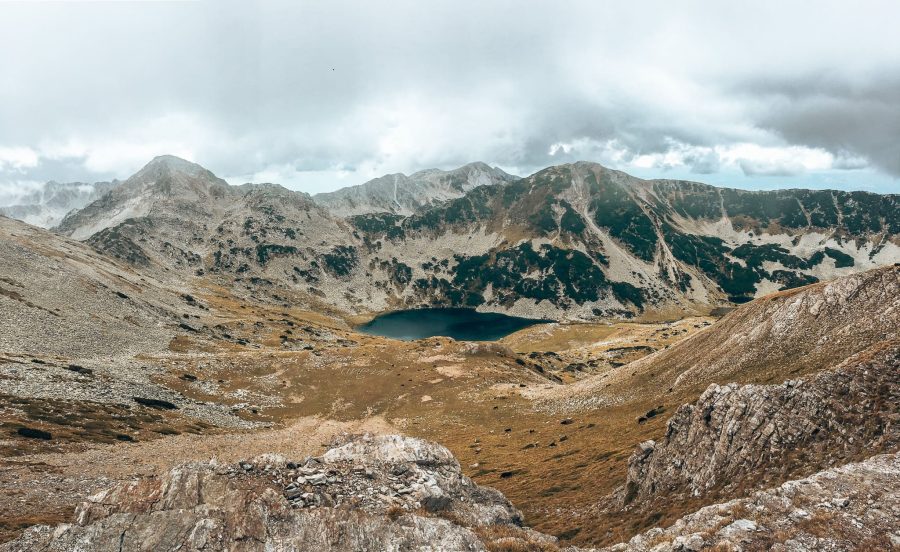
This guide will tell you about the best things to do in Bulgaria as well as everything you need to know including how to get around, the best time to visit Bulgaria, how long we’d recommend, currency and more.
No time to read this guide on things to do in Bulgaria now? No worries, save it for later!
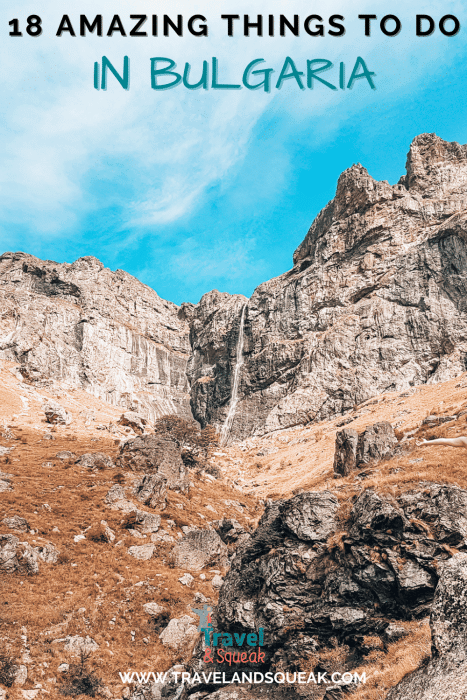
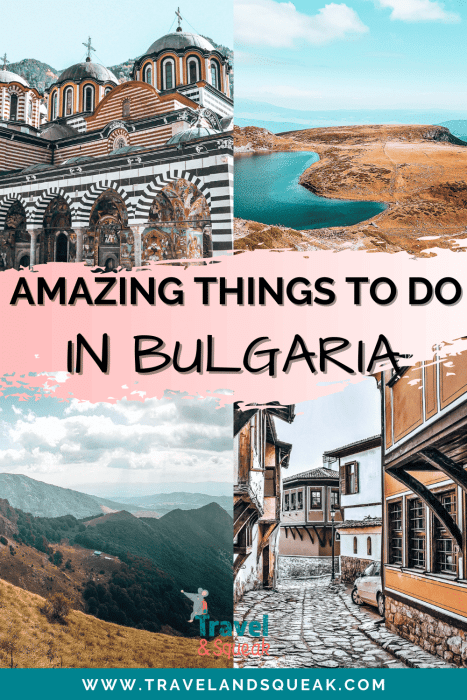
Contents
Best Things to Do in Bulgaria
Hike Botev Peak
Our guide kicks off with one of our favourite things to do in Bulgaria; hike Botev Peak.
At 2,376 metres above sea level, Botev Peak is the highest peak in the Central Balkan National Park and home to the highest waterfall in Bulgaria; Raiskoto Praskalo (Paradise Waterfall) at 124 metres tall.
The landscapes as you hike Botev Peak are diverse and magnificent! Endless mountains meet shaded scented forests with streams so fresh you can drink from. Imposing cliff faces meet pretty meadows, wildlife and panoramic viewpoints where you can truly appreciate the beauty of the Balkans.
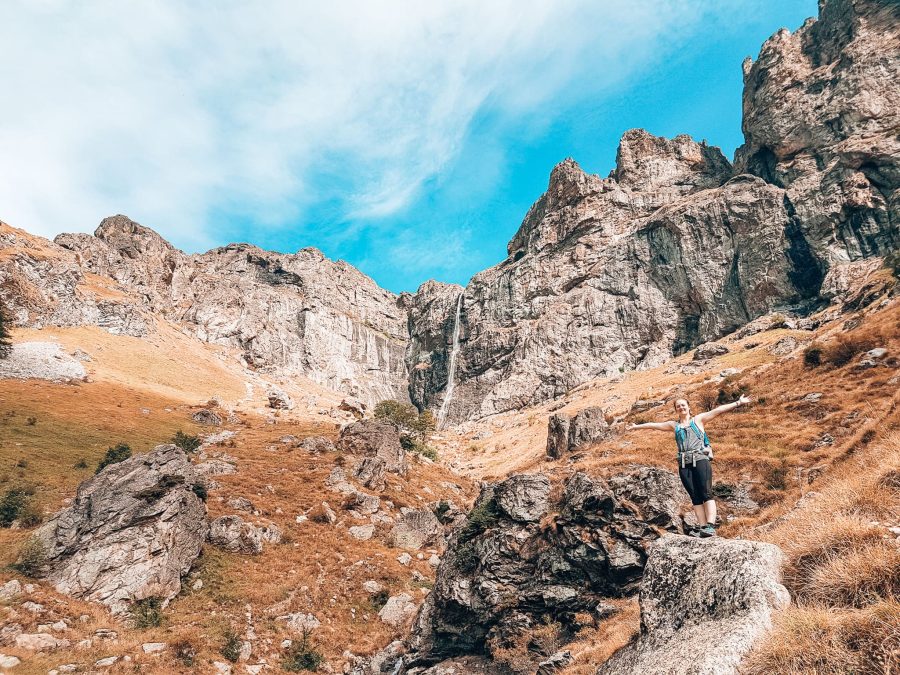
Unfortunately, the summit of Botev Peak isn’t overly exciting. A meteorological station with a radio tower stands to greet you as you conquer your challenge. The hike, however, more than makes up for it.
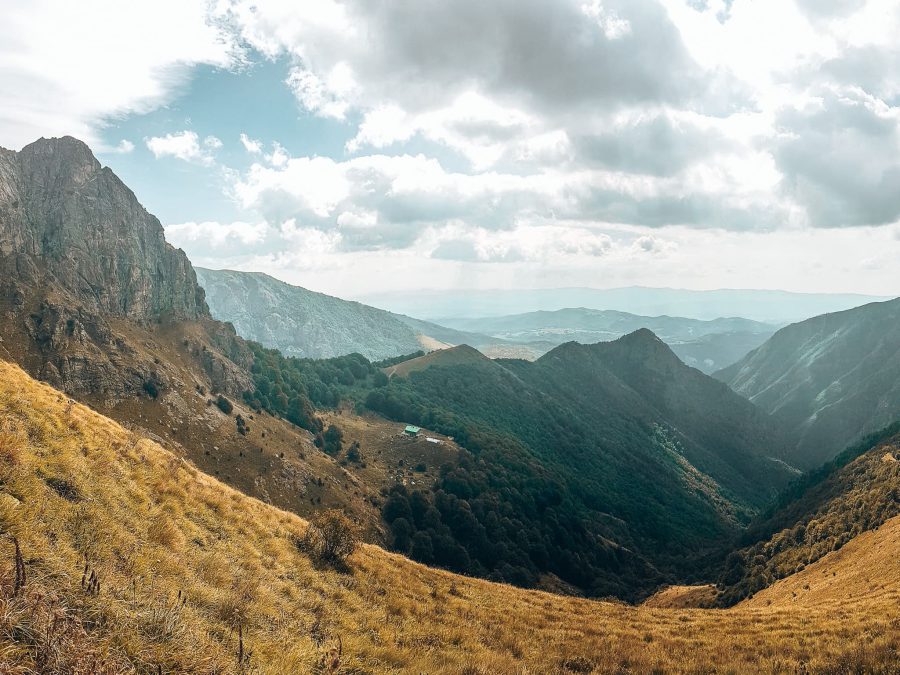
The hike is 30 kilometres and pretty challenging. At parts, there are ropes and chains to help yourself up. Make sure you’re wearing proper hiking shoes.
If you don’t want to do the hike in a day, stay in Rai Hut, approximately halfway between the trailhead and the peak.
To give you an idea of how quiet Bulgaria can be, we only saw 2 people on this hike and they both worked at Rai Hut!
Get Lost in Plovdiv's Kapana
One of the best cities to visit in Bulgaria is Plovdiv. Full of so much charm and character, it’s little wonder it was the European Capital of Culture in 2019!
Kapana, or “The Trap”, is a labyrinth of narrow cobbled streets that’s easy to get lost or ‘trapped’ in. In the past, it was the centre of Plovdiv’s artisans and today has been restored to a trendy area filled with hipster cafes, art galleries, boutiques and the city’s best dining and nightlife.
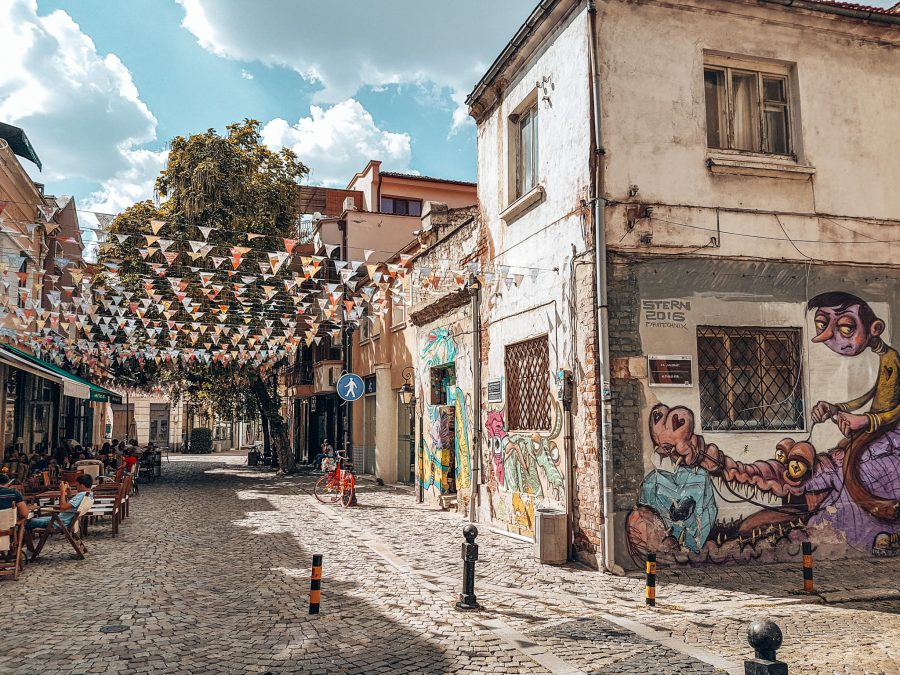
One of the best things to do in Bulgaria is to walk these vibrant, flag-strewn lanes in the evenings, soaking up the atmosphere. The streets are full of rickety tables and chairs with people laughing, eating and drinking.
There’s always something going on here. It’s a favourite for musicians and artists so keep your ears peeled for live music and your eyes for funky street art.
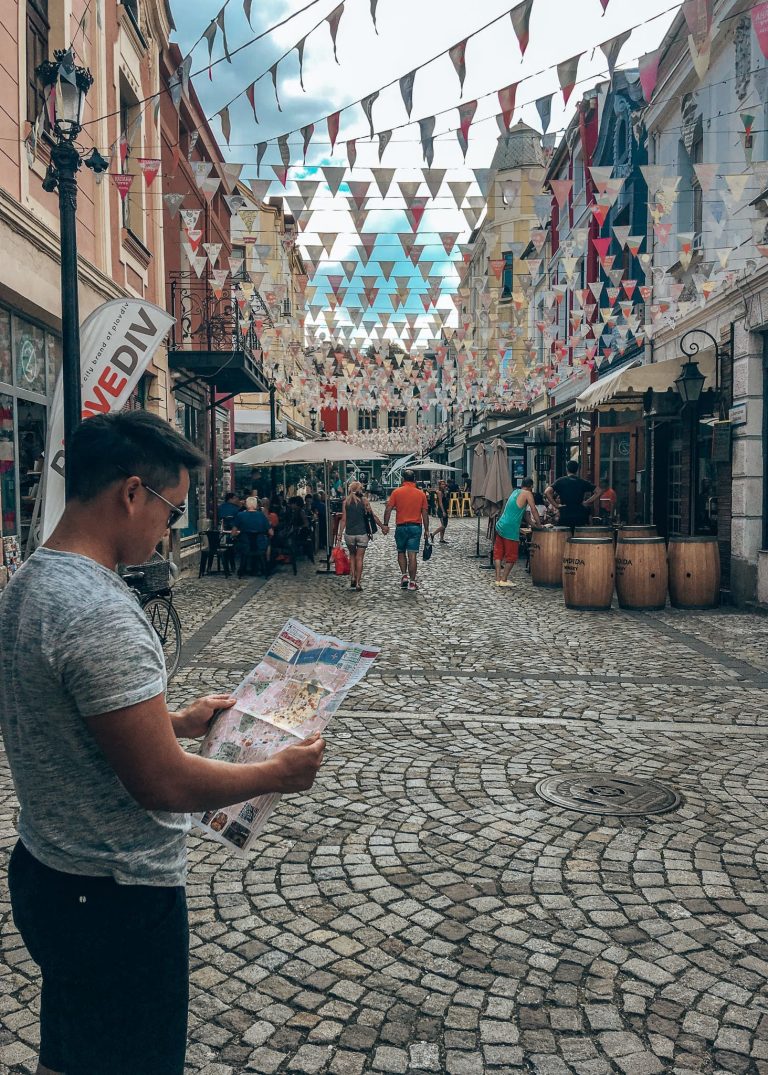
Admire the St. Alexander Nevski Cathedral
No trip to Sofia is complete without seeing this architectural masterpiece!
The St. Alexander Nevski Cathedral is the second-largest cathedral in the Balkan region and it was once one of the largest Eastern Orthodox churches in the world. You can hear the bells ringing from over 15 kilometres away!!
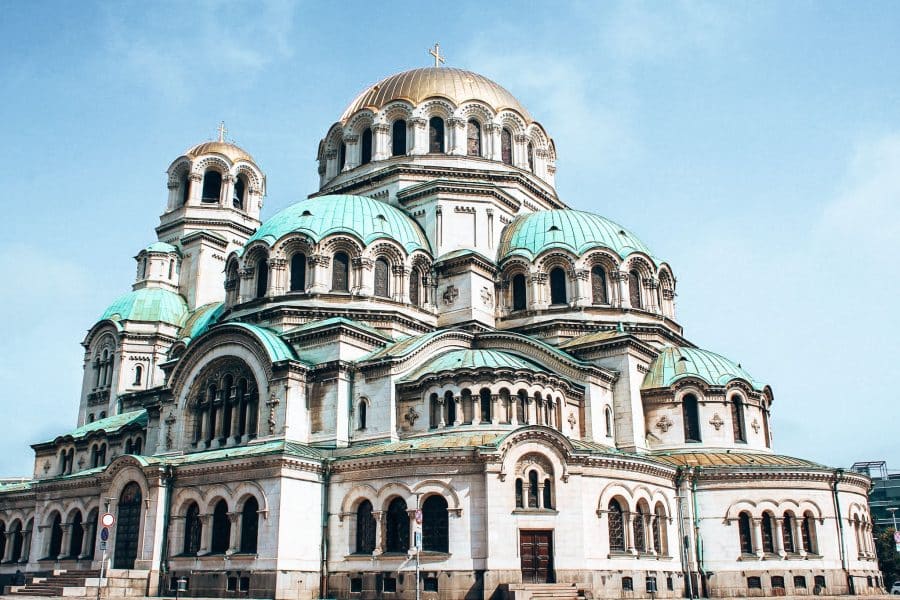
Located in the heart of the city, St Alexander Nevsky Cathedral is constructed in a beautiful and intricate Neo-Byzantine style. Decorated with impeccable mosaics and imposing golden domes, this is one of the most famous landmarks in Bulgaria.
The cathedral is steeped in history and an important symbol of Bulgaria’s past.
Our Top Tip: the interior is even more beautiful, however, you’re not able to take photos inside. You’ll have to go and see it yourself!
Hike the Seven Rila Lakes; one of the best things to do in Bulgaria
Hiking the Seven Rila Lakes is hands down one of the best things to do in Bulgaria!
Set in breathtaking mountain scenery, the Seven Rila Lakes are a series of seven glacial lakes situated between 2,100 and 2,500 metres above sea level in the northwestern Rila Mountains.
The Seven Rila Lakes are easily one of the most remarkable natural attractions in the Balkan Peninsula. They attract both Bulgarian tourists and visitors from all over the world eager to be enchanted by their sheer beauty.
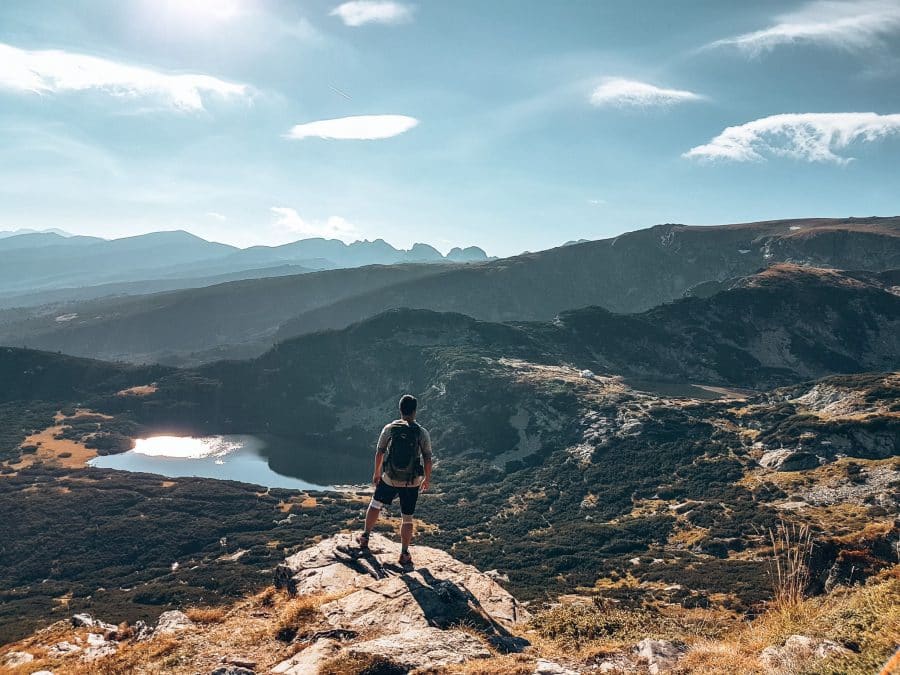
Each of the seven lakes has a name associated with its characteristics; The Tear, The Eye, The Kidney, The Twins, The Trefoil, Fish Lake and Lower Lake (from highest to lowest).
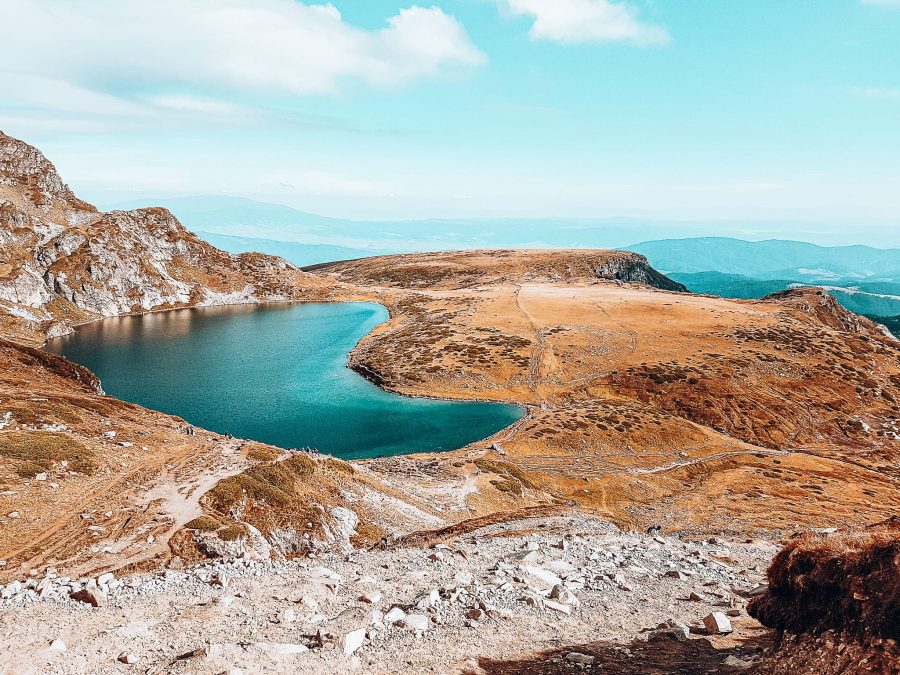
Small streams and waterfalls flow between each lake connecting them. The Tear, The Eye and The Kidney each drain separately into The Twins. From here, the water flows onto the lower three becoming more powerful as it passes the bottom two and flowing on from Lower Lake, it forms the start of the Dzherman River.
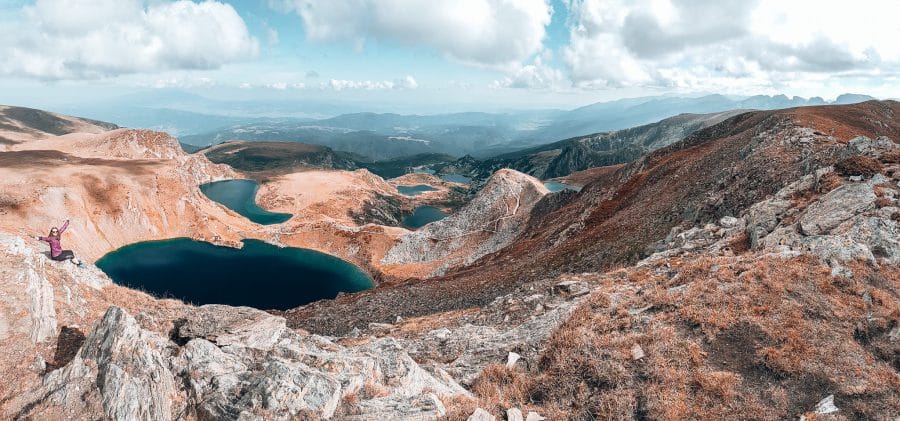
Our Top Tip: hiking the Seven Rila Lakes is one of the most popular things to do in Bulgaria so arrive early. We’d recommend staying in the nearby town Panichishte as it’s a very popular day trip from Sofia and this way you’ll be here before the day-trippers.
For our full guide to hiking the Seven Rila Lakes, read our guide below.
Explore Bansko; most beautiful places in Bulgaria
Bansko has grown in popularity in recent years as a ski resort and as a result, has undergone a lot of development. It has managed, luckily, to retain a lot of charm and is definitely worth spending a couple of days as a base to explore the nearby mountains.
Bansko lies at the foot of the Pirin Mountains and in the summer is an alluring, quiet town with gorgeous mountain scenery.
Pirin Street is the main street in Bansko and where you’ll find shops, restaurants, bars and most of the accommodation.
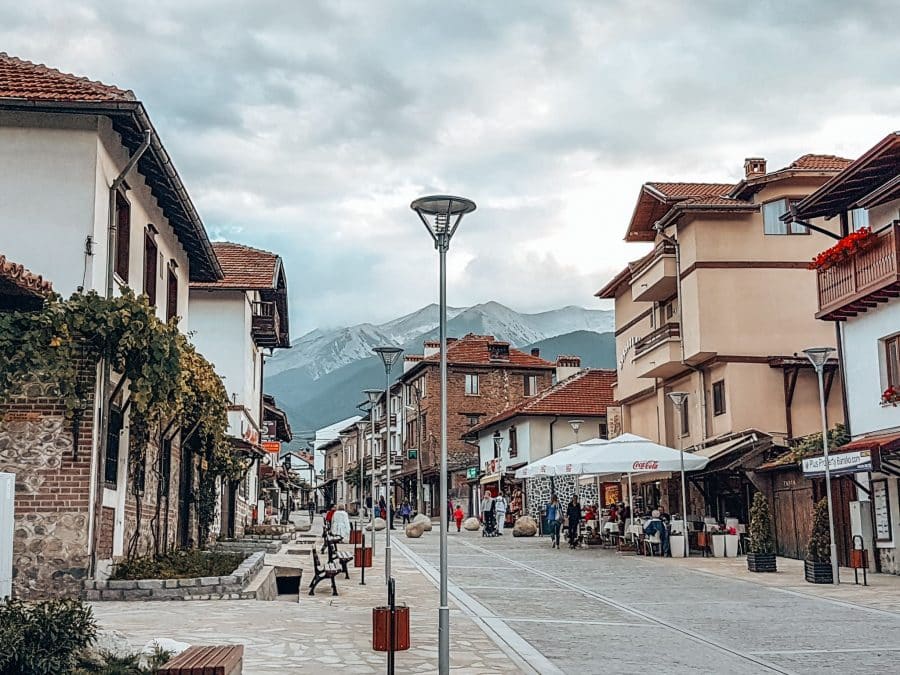
Lining this pedestrianised street are charismatic, traditionally decorated mehanas serving huge portions of Bulgarian cuisine often accompanied by traditional music and dancing.
Some of them are set in beautiful tranquil gardens.
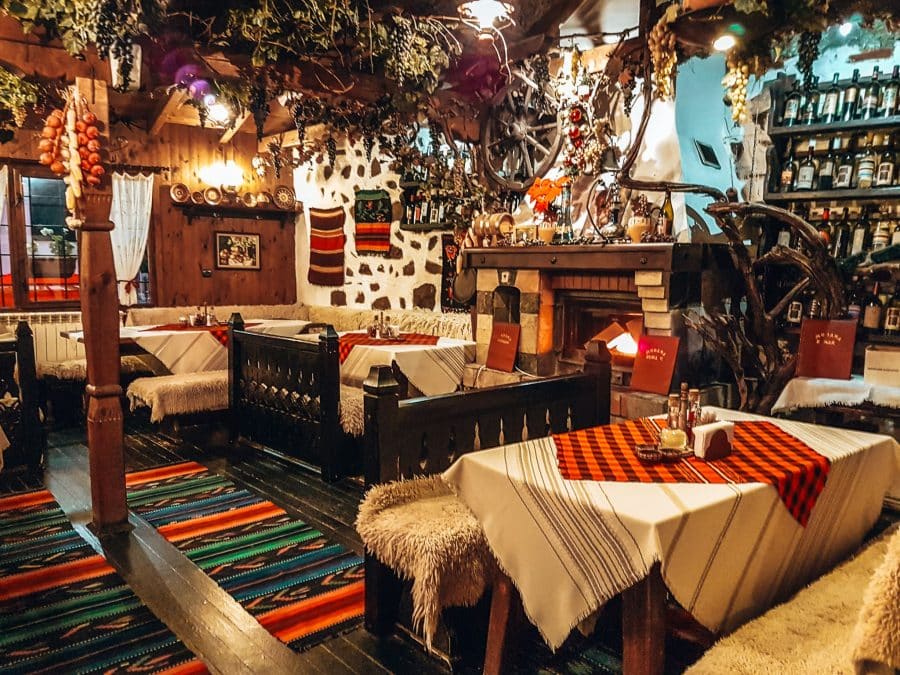
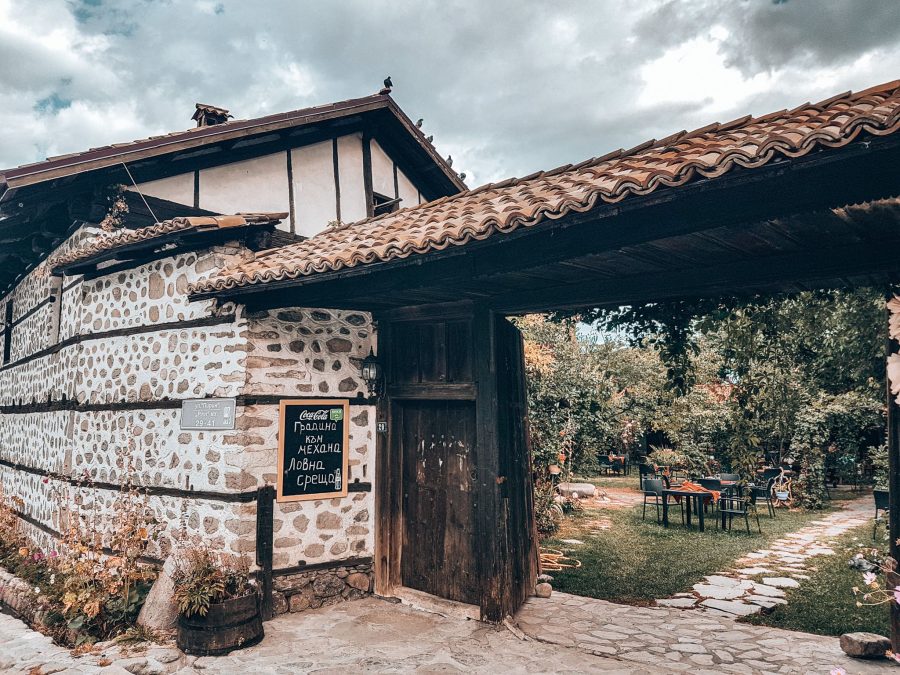
Spend some time meandering the Old Town for an insight into what Bansko used to be like.
The narrow cobbled streets are lined with charming traditional stone buildings that feel like they’ve been frozen in time. You’ll feel a world away from anywhere ambling about in the absolute peace and tranquillity that envelopes this area.
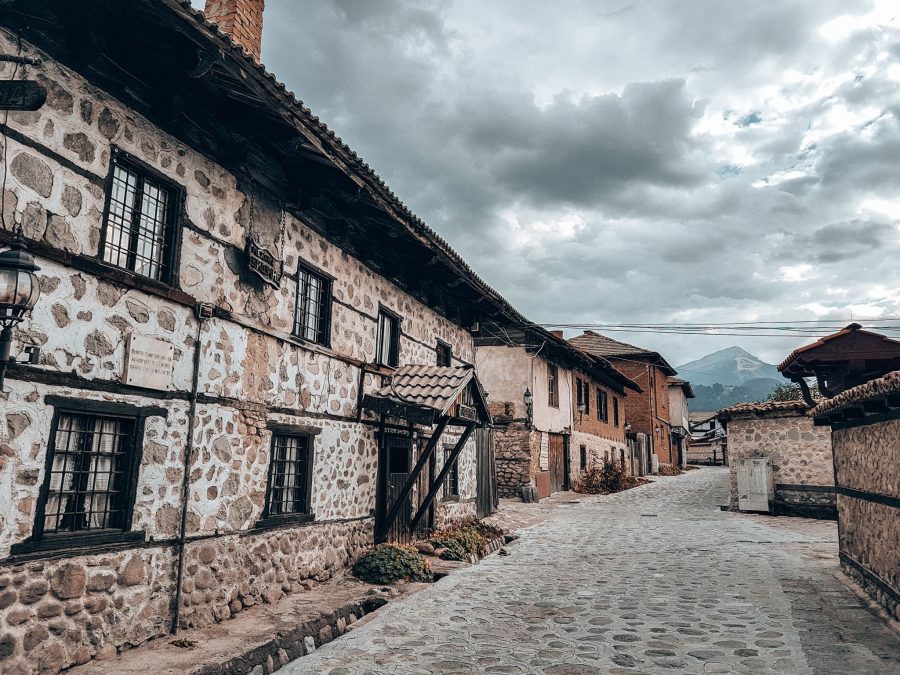
Hike Vihren Peak
One of the best things to do in Bulgaria and our reason for visiting Bansko is to hike Vihren Peak; the highest peak in the Pirin Mountains at 2,914 metres.
Most of the trail is pretty steep and rocky and the final stretch inclines even more. It’s a fairly challenging hike and the day we were there, it was incredibly foggy and couldn’t see further than about 10 metres in front of us so it wasn’t too enjoyable.
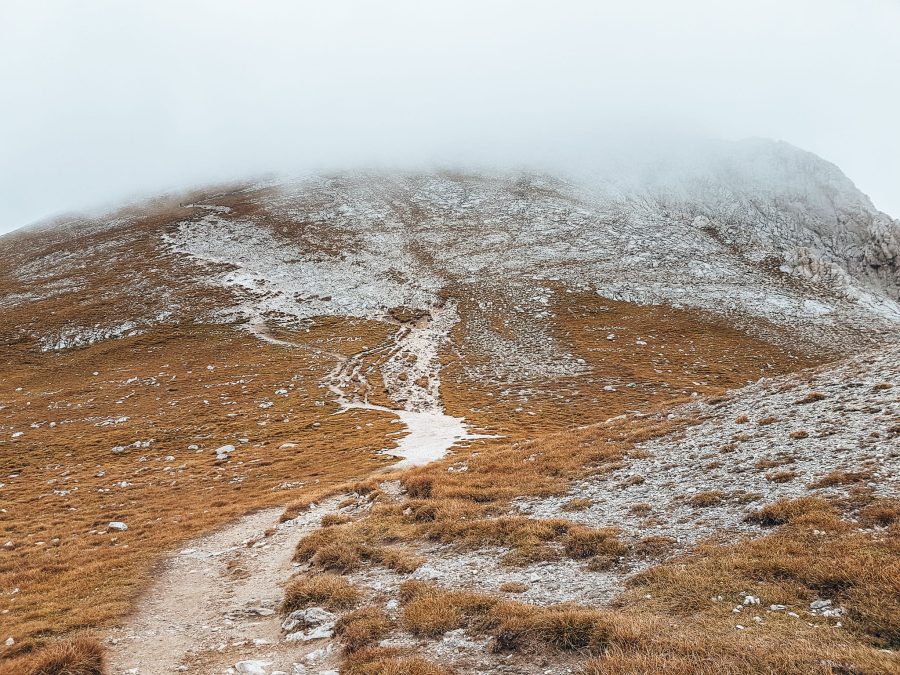
Luckily, as we were eating at the top, wrapped up in several layers to protect us from the wind, the sun came out and the views were amazing!
You can see the whole of Pirin National Park and out to mountains scattered across Northern Greece looming in the background.
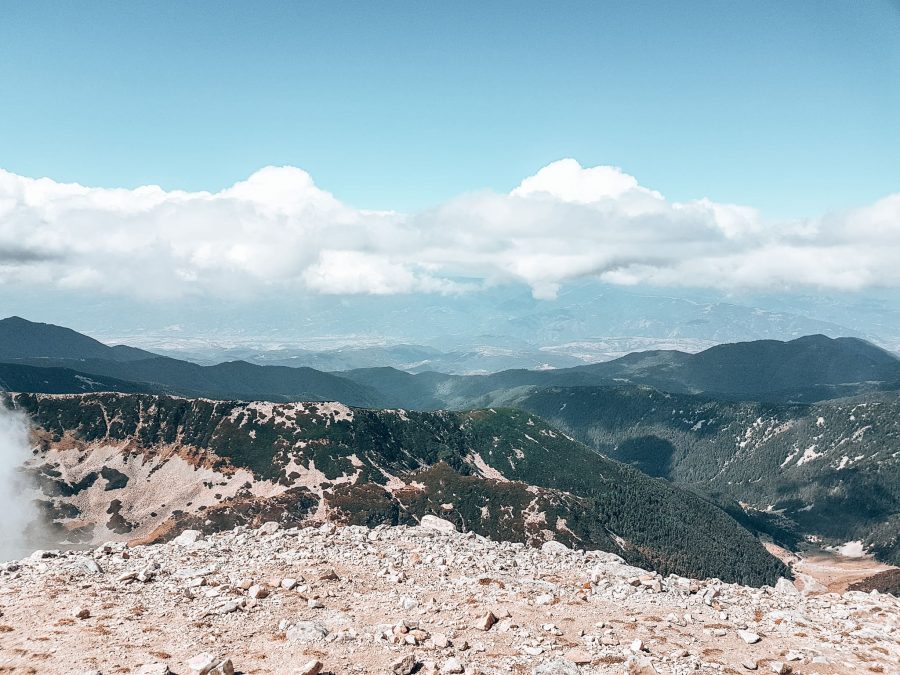
On our way back down, fortunately, the clouds had lifted slightly and we could take in our surroundings. The route is actually very beautiful and it was a shame we couldn’t see it.
Alpine lakes, shaded pine forest, Chamois and imposing rock faces.
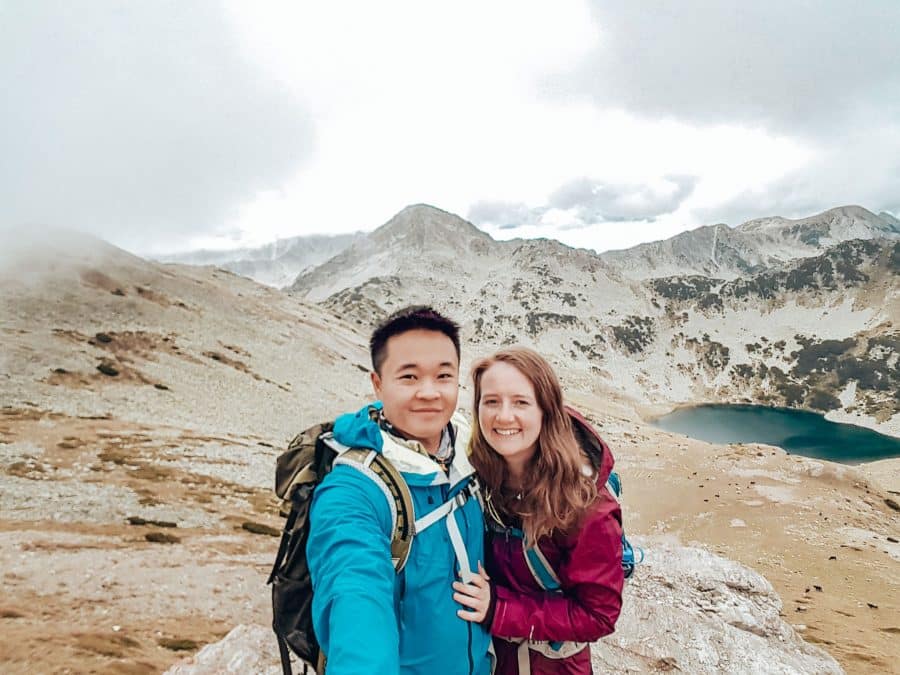
The hike is 8.7 kilometres and took us 5 hours to complete.
Our Top Tip: this is a challenging hike that shouldn’t be attempted by beginners. The last 30 minutes before the peak is a tough scramble. There are several chains, however, if you’re hiking on a foggy day as we were, you may lose the trail and not have the help of these.
Visit the Rila Monastery
Visiting the Rila Monastery is one of the most fascinating things to do in Bulgaria.
Rising out of a forested valley in the Rila Mountains, Rila Monastery is the largest and most famous Eastern Orthodox Monastery in Bulgaria. This is one of the most famous landmarks in Bulgaria and is a UNESCO World Heritage Site. It also houses an extraordinary collection of religious art.
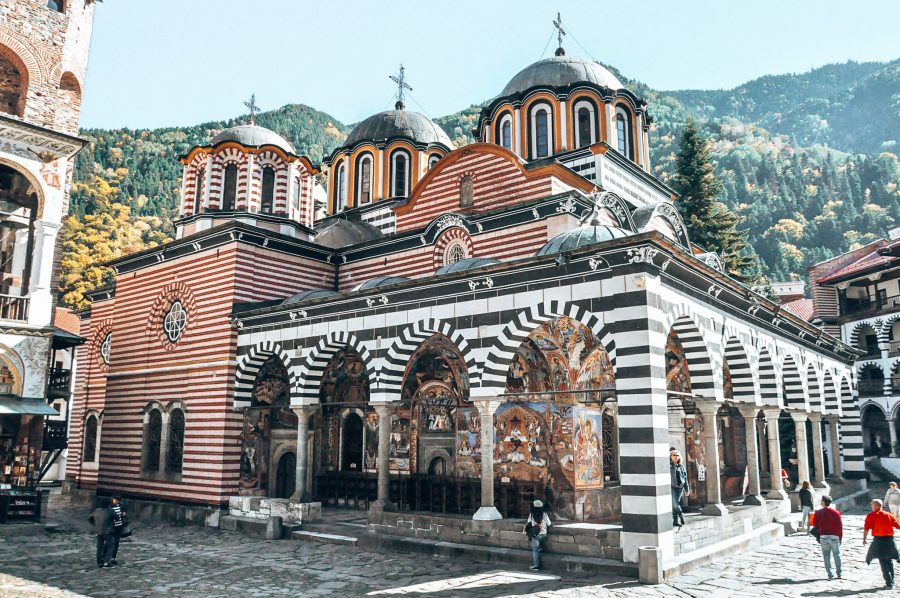
Stroll through striped black, red and white archways, explore its elegant colonnades and admire the grandeur of its murals and icons.
For a glimpse into monk life, one of the best things to do in Bulgaria is to stay in the living quarters where monks still live.
Stroll Plovdiv's Old Town; one of the best cities to visit in Bulgaria
One of the top things to do in Bulgaria is to saunter through Plovdiv’s romantic Old Town. This is an Old Town like no other we’ve ever seen! Most are crowded, noisy and full of street vendors. This couldn’t be more opposite.
This one takes you back to the old times. The narrow cobbled streets are lined with colourful museums, antique shops, guesthouses, elegant revival-era townhouses and galleries in perfect silence. Most of the buildings are from the 19th century and are absolutely stunning!
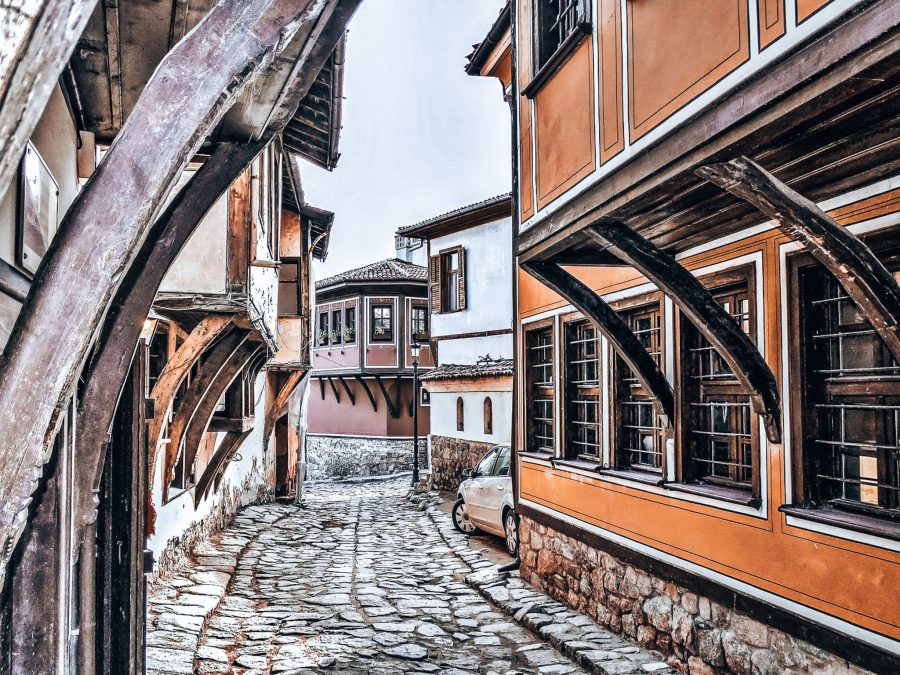
For an overview of Plovdiv’s diverse history, head to the ethnographic museum set in the magnificent Kuyumdjiev House. This is the most emblematic of the revival-era townhouses and is now an enchanting museum.
Here, you can learn about life in Plovdiv and the surrounding area during the Bulgarian National Revival Times.
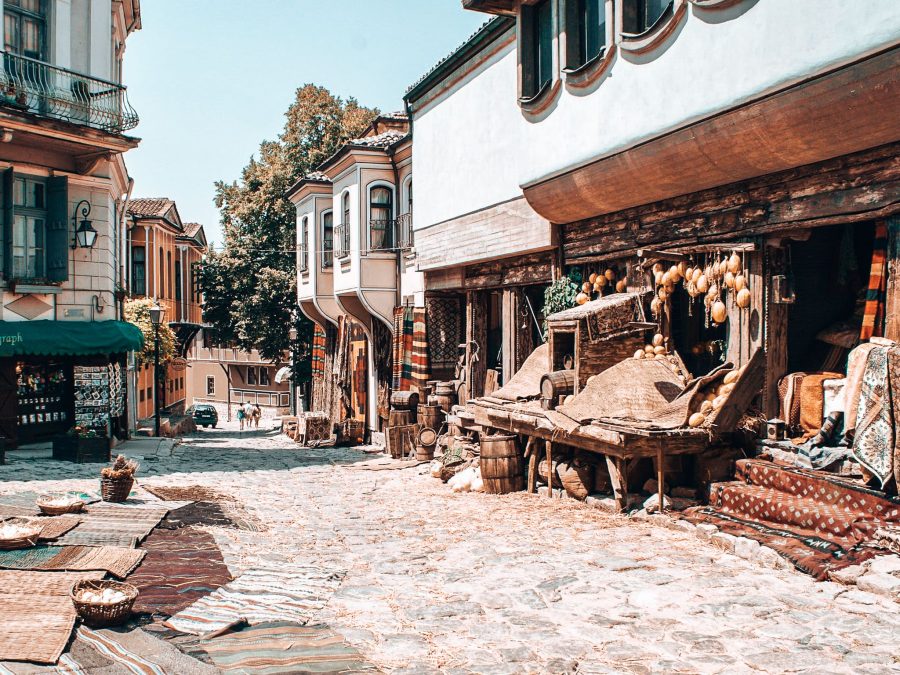
Visit Sofia
Bulgaria’s quirky capital city is a great base for an introduction to Bulgarian culture and history.
Sofia has spent most of the last 2,000 years under occupation by numerous empires and each has left its marks. Eastern Orthodox churches brush shoulders with ancient ruins, Ottoman mosques and communist architecture.
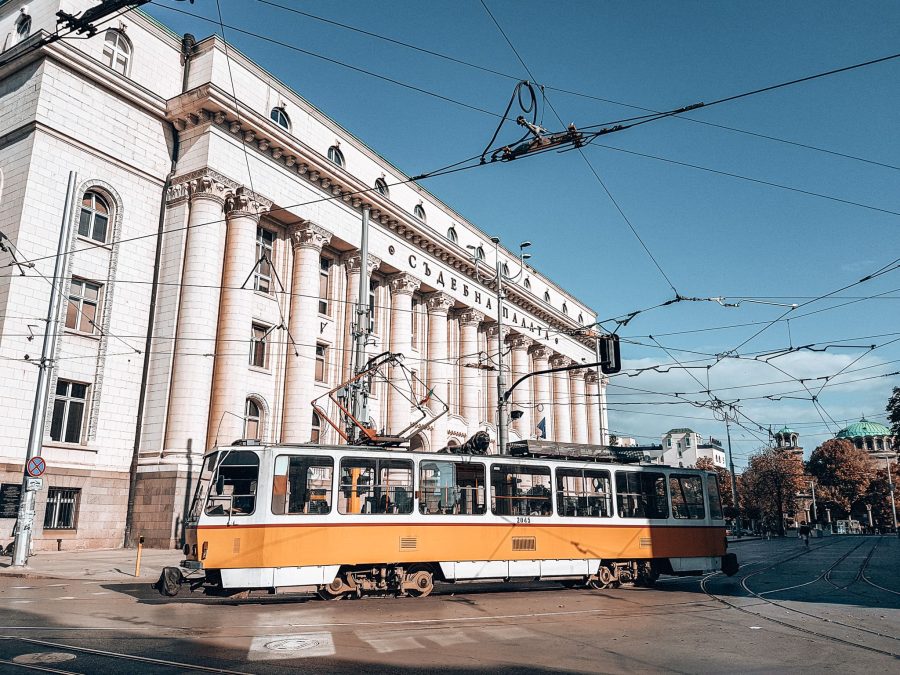
These, nestled amongst trendy art galleries, museums, boutiques, street markets, hipster cafes and quirky bars and restaurants, make Sofia a very vibrant and dynamic city.
Our Top Tip: the best way of getting around Sofia is on foot. Walking between the main sights one minute you’ll be lost in narrow cobbled lanes and the next you’ll be strolling through a market on a wide boulevard.
Visit the Ancient Theatre of Philipoppol
Located in Plovdiv’s Old Town is the Ancient Theatre of Philipoppol. A startling reminder of the city’s past, this ancient theatre is one of the best-preserved in the world.
The Ancient Theatre of Philipoppol was constructed in the 1st century AD, and, until the 4th, hosted gladiatorial and hunting games. It was reconstructed in the 20th century and as well as being an incredibly important Plovdiv landmark, in the summer, it hosts various concerts and performances.
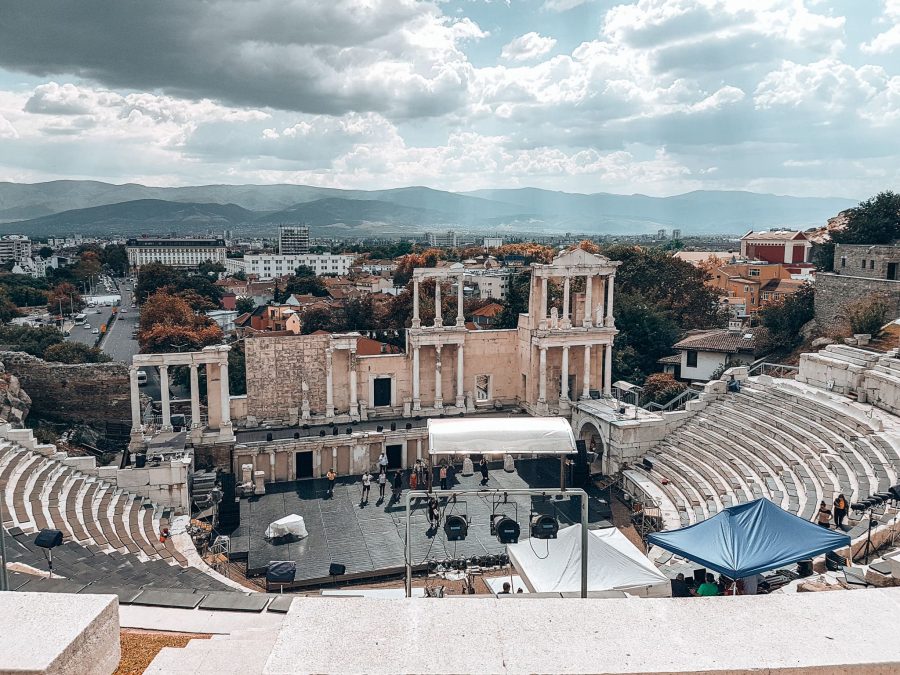
Meander Borisova Gradina
This is Sofia’s oldest and most famous park and is perfect for an afternoon stroll.
Borisova Gradina is divided into three sections and each was designed by a different gardener. If you’re craving an escape from the hustle and bustle of the city, or you just fancy some fresh air and tranquillity, this is the ideal escape.
Miles of tree-lined pathways intertwine around the park and its features including; interesting sculptures, the Soviet Monument, the Summer Swimming Bath, the University Observatory, the Ariana Lake and many more.
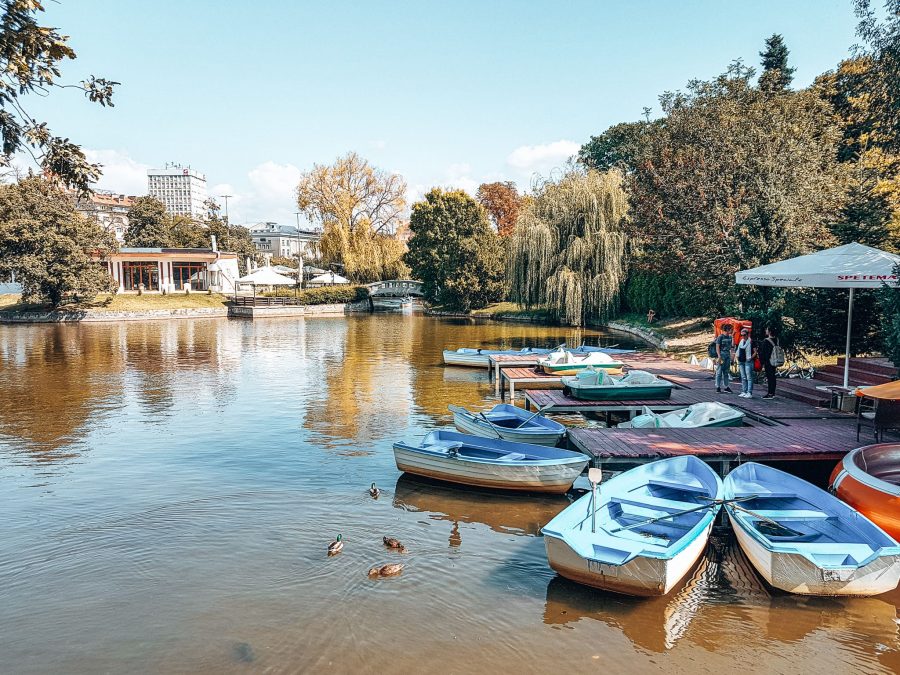
Eat Local Cuisine; one of the top things to do in Bulgaria
One of the absolute best things to do in Bulgaria and also one of the best ways to get to know somewhere new is to dine like a local.
Bulgarian food is delicious, fresh and hearty! It shares the same characteristics with other Balkan cuisines – namely Turkish, Greek and Serbian.
Meat tends to be the main staple. Pork and chicken are the most popular, accompanied with fresh, high-quality vegetables containing a variety of mild spices.
Although meat tends to be the main staple, you can get by pretty easily if you’re a vegetarian, especially in the larger cities. Cheese is put on almost everything, however, so vegan may be in more remote areas.
Our favourite dish was melted cheese and cornflakes with jam. It may sound a bit funky and we were sceptical but somehow it works and it’s absolutely delicious!
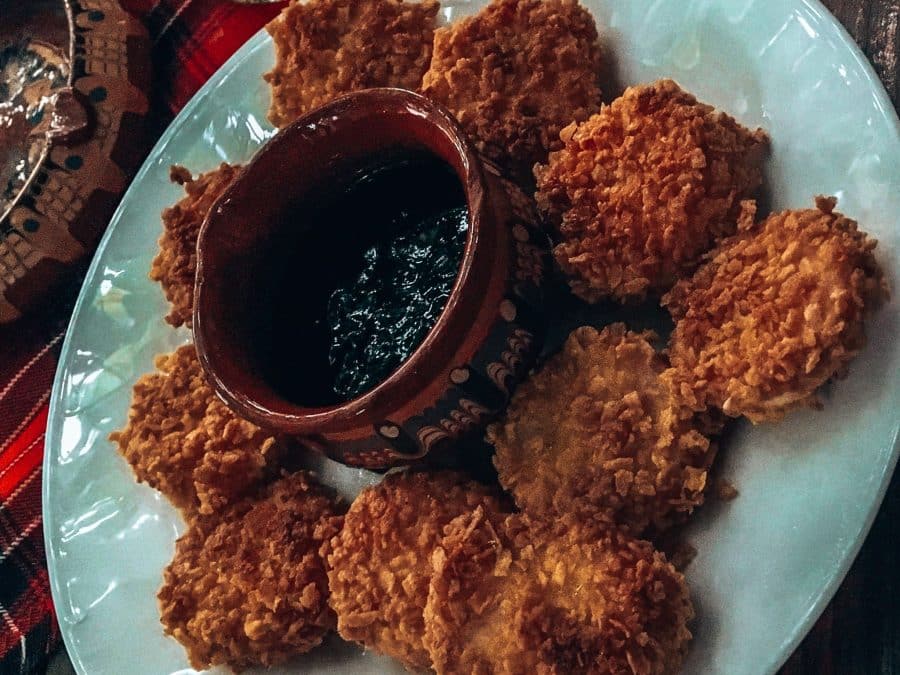
Shopska salads are popular before meals. This is a refreshing mix of tomatoes, cucumber, peppers, onion and sirene cheese. For the ultimate Bulgarian experience, enjoy your salad with a shot of rakia! Interestingly, the salad’s most prominent colours match the colours of the flag…coincidence??
For another refreshing start to a meal, especially on a hot day, try tarator; a cold yoghurt soup made up of cucumbers, dill, garlic, olive oil and sometimes walnuts.
Main meals often consist of Kebapche, or kebabs, which are grilled meat with spices. Meshana Skara is also common; mixed grill typically including kebapche, kufte (a bit like meatballs) and a pork skewer similar to souvlaki).
Walk Down Vitosha Boulevard
Lined with upmarket boutiques, charming shops, cute open-air cafes, quaint restaurants and lively bars, Vitosha Boulevard is the fanciest street in Sofia.
It’s quite touristy, especially in the evenings with chairs and tables lining the streets but there’s a vibrant buzz in the air that’s worth experiencing.
The boulevard also has a dramatic backdrop of Vitosha Mountain so if nothing else here inspires you, come for a look at that!
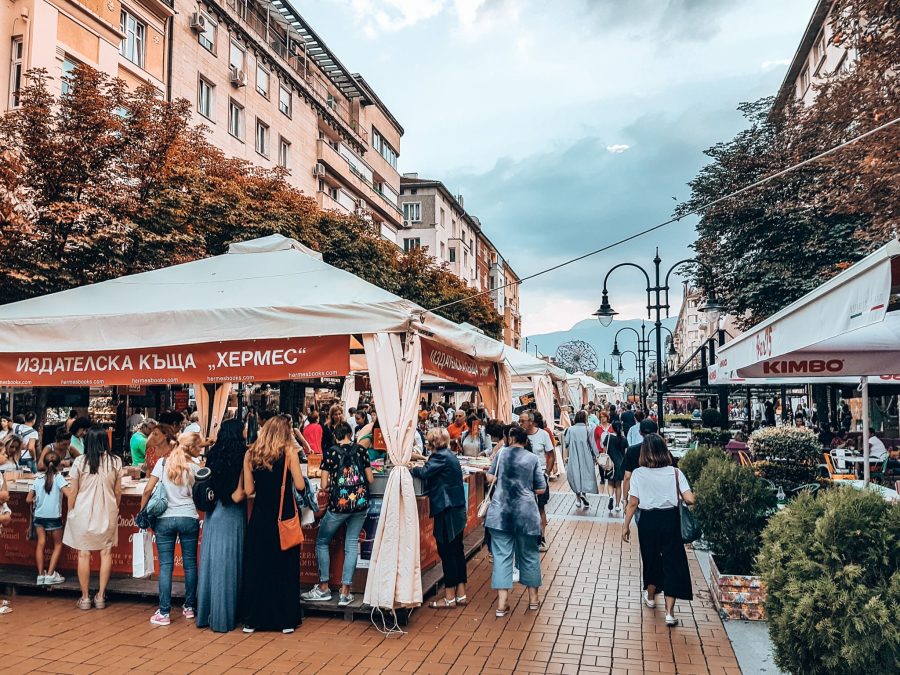
Visit Bachkovo Monastery; one of the most beautiful places in Bulgaria
Just outside of Plovdiv, is Bulgaria’s second-largest monastery and one of the most interesting things to do in Bulgaria.
Founded in 1083, it’s one of the oldest monasteries in the Balkan Peninsula and famed for combining three cultures – Byzantine, Bulgarian and Georgian.
Immersed in nature, the monastery has a spectacular setting in the Rhodope Mountains. It truly is one of the most beautiful places in Bulgaria.
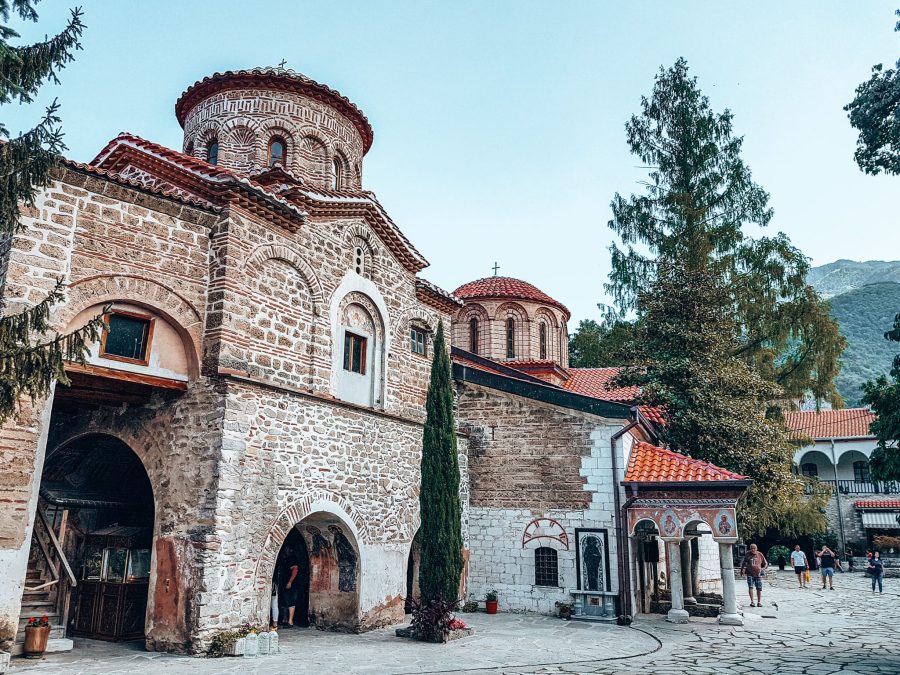
Various murals and icons are on display that have been beautifully preserved. Its most treasured item is the miraculous Virgin Mary icon given to them by two Georgian travellers.
The courtyard is a favourite gathering place for pilgrims with its impressive trees and serene setting.
It’s still a functioning monastery and the monks offer overnight accommodation.
It’s free to visit the Bachkovo Monastery grounds, 4 LEV to visit the refectory and 5 LEV for a guided tour of the refectory.
Stroll Around Tsar Simeon Central Garden
If you’re tired from walking around Plovdiv’s ancient ruins and enchanting Old Town, relax under the leafy trees in the Tsar Simeon Central Garden. These gardens are perfect for an hour or so to relax after a day of sightseeing.
Inside the park are various monuments dedicated to Bulgarian spiritual leaders and a fountain dedicated to Goddess Demeter; Goddess of the Harvest.
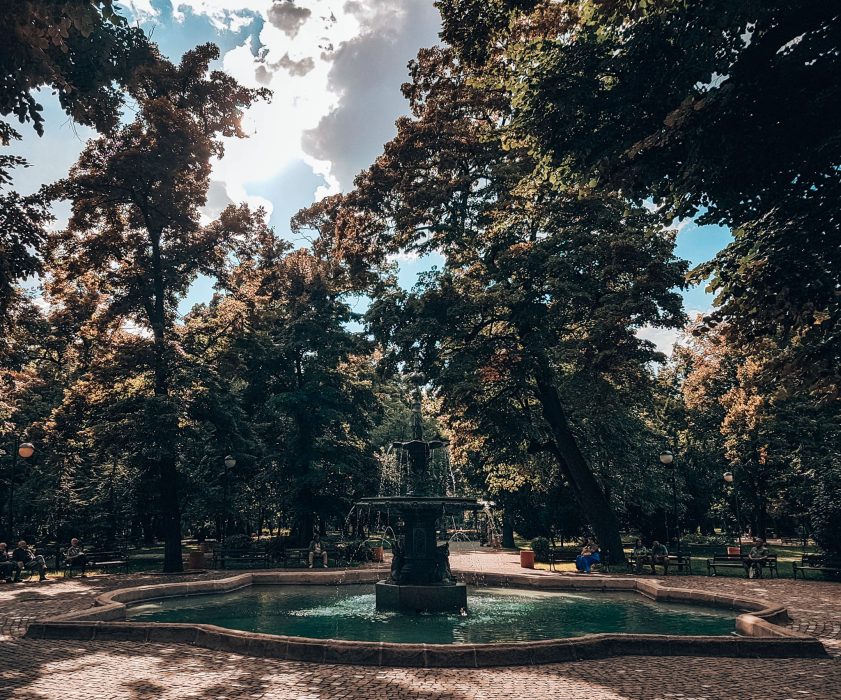
The main attraction of the park, however, is the Lake with the Singing Fountains. Every Thursday, Friday and Saturday, during the summer, the lake puts on a spectacle of fountains and lights at around 9pm.
There’s also a restaurant and a bar overlooking the lake, perfect for pre-dinner drinks.
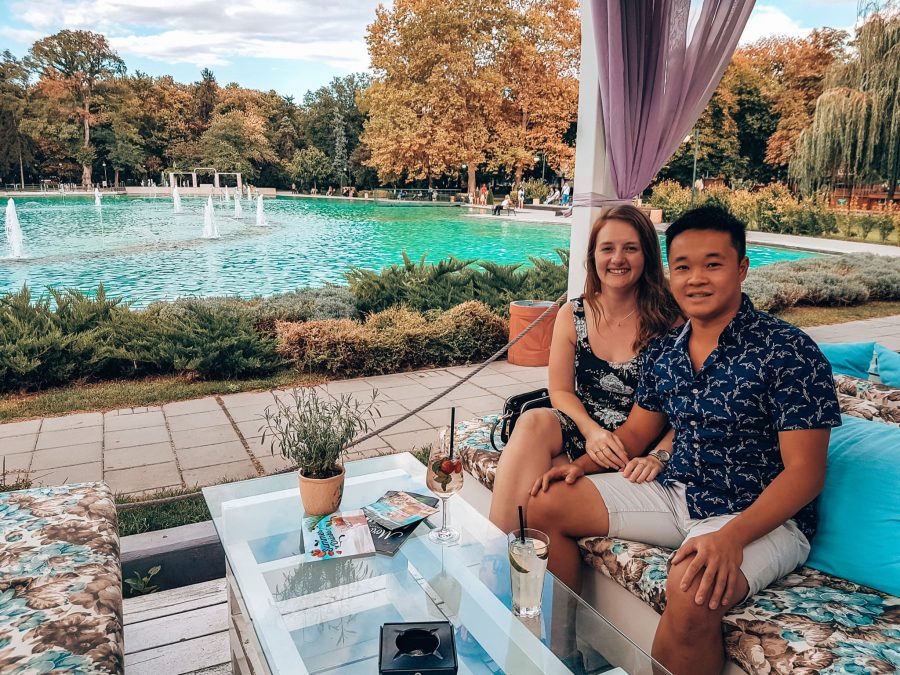
Visit the Regional History Museum
Displayed in the magnificent, former Turkish Mineral Baths building is the history of Sofia.
Artefacts are presented on two floors and include discoveries from archaeological digs, memorabilia from Bulgarian royal families and a horse carriage gifted to Bulgaria by Marie Antoinette.
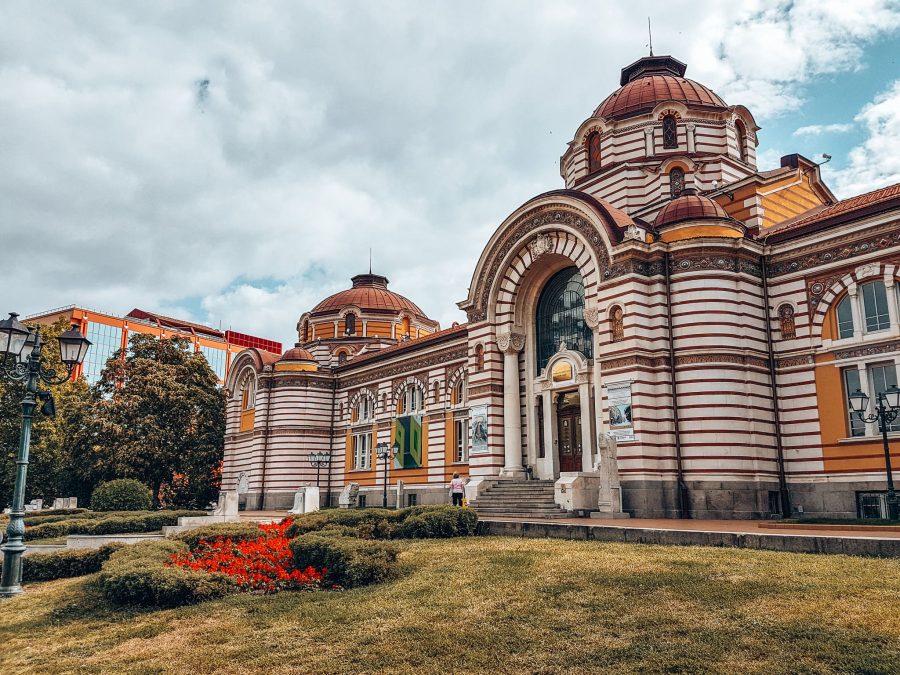
Sofia has a lot of spring activity which has attracted visitors since medieval times. Initially, the Ottomans constructed their own hammam here which was destroyed following the Bulgarian Revival. The Central Baths date to 1913 and were in use until the mid-1980s.
It’s one of Sofia’s most photographed buildings, constructed in the neo-Byzantine style.
Explore Plovdiv's Roman Stadium
Something you’ll quickly notice about Plovdiv is the historical and archaeological remains are layered throughout the city.
As the city has undergone a lot of construction and rebuilding over its time, new buildings were built over the old ones. This has resulted in parts of ancient sites nestled amongst modern buildings. This just adds to Plovdiv’s character and uniqueness.
One place this is most prominent is along the main shopping street where below it lies the Roman Stadium.
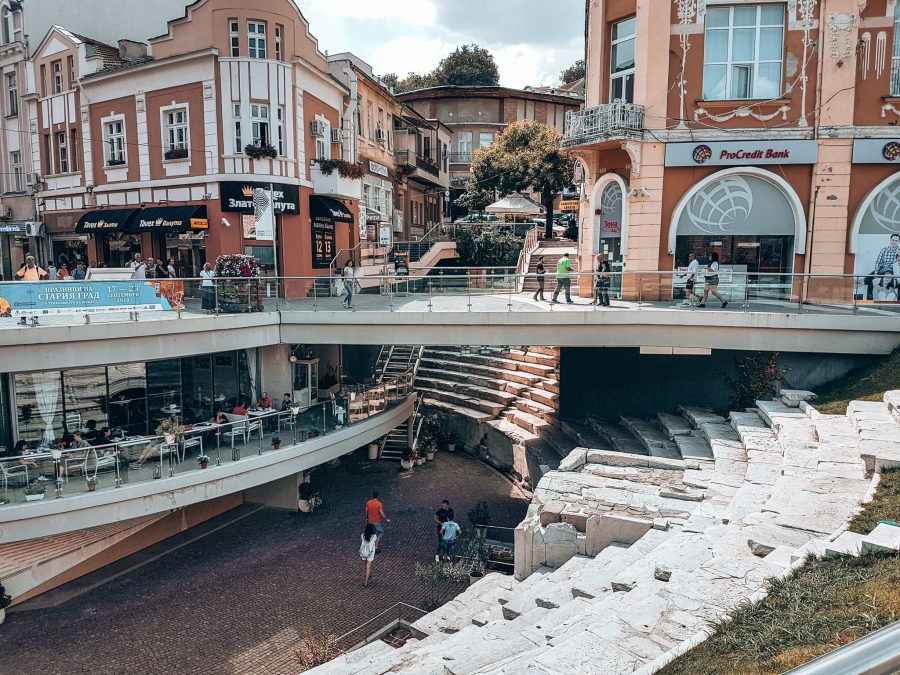
The ancient Roman Stadium was built in the 2nd Century A.D and was one of the most imposing buildings in the city during its time.
Pronounced a National Cultural Value in 1995, the only area that’s exposed is in Dzhumaya Square. Today you can access part of the track, the semi-circular part of the spectator seats and a wall depicting the hypothetical reconstruction of the area’s that are missing.
Visit St. George Rotunda
To round off the best things to do in Bulgaria is to visit the Church of St George; thought to be the oldest building in Sofia.
It was initially built during the 4th century by the Romans and stands among some ancient Roman ruins. Somehow, the church has been excellently preserved over the centuries which is surprising looking at all of the ruins scattered around it!
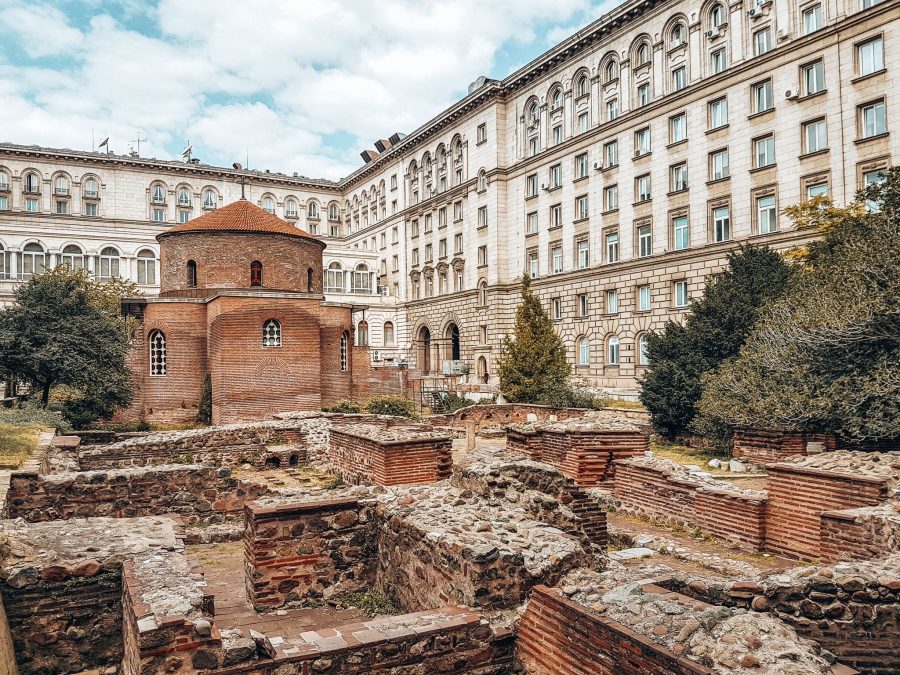
The church is particularly well known for the magnificent frescoes inside. There are five layers in total dating back as early as the 6th century. The frescoes were painted over by the Ottomans when the church was converted to a mosque in the 1600s.
Everything You Need to Know to Visit Bulgaria
The best time to visit Bulgaria
The best time to visit Bulgaria for the weather is April to October. We visited in September which was perfect as it was a pleasant temperature for sightseeing and hiking and it was outside of the school holidays so fewer crowds.
July and August, unsurprisingly, are the busiest time of year. Prices increase and temperatures can rise to above 40 degrees!
In the winter, a lot of things shut down. Unless you’re a snow baby and fancy some skiing or snowboarding? Bansko is becoming an increasingly popular budget ski destination.
Getting around Bulgaria
The best way of getting around Bulgaria is to rent a car giving you complete flexibility and freedom. Driving is easy as the roads are very quiet outside of the cities. Public transport is fine in the cities but if you’re wanting to travel further afield you might find it tricky.
Recommended time for the top things to do in Bulgaria
For the best things to do in Bulgaria, we’d recommend a minimum of 8 days. This is how long we had and we sometimes felt a bit rushed. You could easily spend longer and travel at a more relaxed pace.
How Expensive is Bulgaria?
Bulgaria is a great budget-friendly holiday.
Meals in the smaller, less touristy towns expect to pay about 8 USD and 2.50 USD for a beer. In the cities, about 10 USD for a meal and 4 USD for a beer. If you dine in one of the restaurants on Sofia’s Vitosha Boulevard, expect to pay closer to 20 USD for a meal and 6 USD for a beer.
We stayed in little guesthouses for around 30 USD a night. Activities and tours are also a fraction of the cost of what you pay in other areas of Europe such as Krakow and Lisbon.
What currency is used?
Bulgaria uses the Lev. At the time of writing 1USD is 1.82 BGN.
What plug do I need?
Bulgaria uses plug type F with two round pins. You can also use E and C. The voltage is 230V.
We hope you’ve enjoyed our guide to 18 amazing things to do in Bulgaria. If you have any other recommendations or questions, feel free to leave us a comment.
Don’t forget to follow us on Instagram to stay up to date with us in real time.

